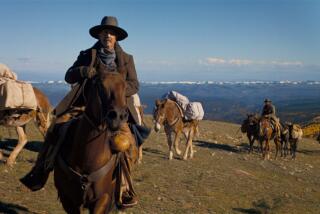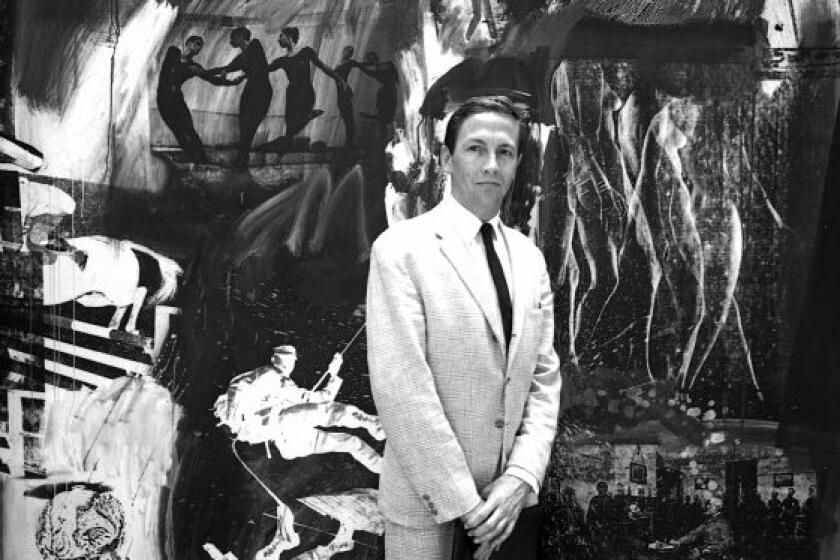Film clip proves too problematic
As Ric Burns’ documentary on the World Trade Center moves toward an implacable future that everyone knows, it also draws upon a previous moment of destruction in which a plane and a New York skyscraper collided, captured on a piece of discarded footage that has subtle echoes throughout the film.
One might call its influence -- in the final film’s impressionistic re-creation, for example, of the flight of the first plane on 9/11 down Manhattan’s Upper West Side -- post-shadowing.
Burns calls the three-minute outtake “a wandering clip,” whose journey forms a kind of “bridge” between the earlier parts of his eight-part New York documentary series and Monday’s concluding chapter. He has made it the centerpiece of public talks.
It begins with the 1945 crash of a B-25 bomber into the Empire State Building that left 14 people dead. Burns shot from a helicopter to simulate flying over a fogbound Manhattan, then built from the crash to an intellectually expansive, visual essay embracing the atomic bomb, bombed-out Europe and the vulnerability that underpins U.S. power as it develops in the Cold War.
Then, as the whole shape of his film came into view, the clip lost a “hand-to-hand combat” with a rival scene about Robert Moses, domineering inventor of New York’s expansion in the postwar era. On 9/11, Burns looked back at the footage as “a premonition” and started to imagine a film about the twin towers that became the last big project to embody that ambitious period. Burns wanted to put the clip at the start of the new film.
In June, he called a reporter to say that it had fallen out “like a tooth from an old man’s mouth.” Then, two weeks later, it was back in. About eight times, he changed his mind. The clip will appear on the DVD, but Burns finally pulled it because “it created a mood from which we could not go on to the rest of the film. It is an allegory of a sense of profound vulnerability in the world. But that fear of the outside world that Americans had at the height of the Cold War went away with the collapse of the Soviet Union,” he says.
“We were relieved of this nightmarish burden. We believed we lived in contact with the rest of the world, but the contact was benign and there wasn’t this scary something that lived over the horizon, beyond our control. That was the great American illusion, the idea that this is a country on which providence has smiled and which is set apart.”
-- Allan Jalon
More to Read
Only good movies
Get the Indie Focus newsletter, Mark Olsen's weekly guide to the world of cinema.
You may occasionally receive promotional content from the Los Angeles Times.






